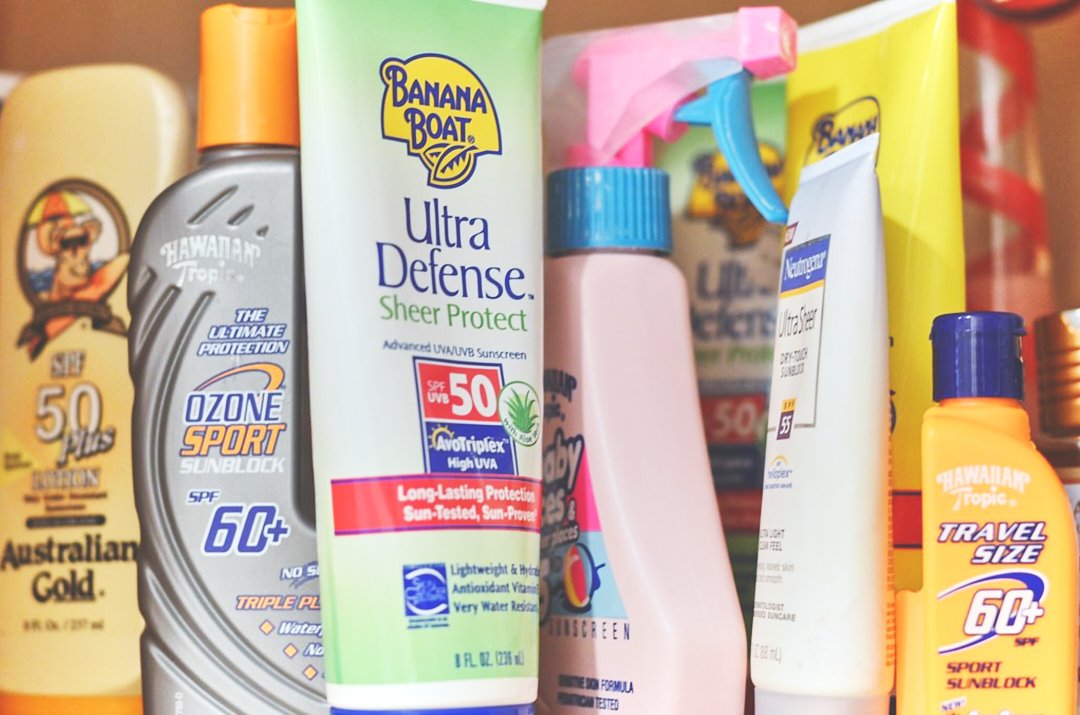#66 Sunscreen Pollution
Sunscreen protects us from ultraviolet rays from the sun, but at what cost? It has been shown that sunscreen affects marine and plant life, as well as causes coral bleaching. If you live by the ocean or have ever gone on vacation by the sea, you will have noticed a translucent slick of oil topping the water of some of the best beaches. This is sunscreen. Using the proper types of sunscreen is imperative for the health of marine ecosystems.
The Sunnyside of Truth:
There are two types of sunscreen, chemical and physical. Chemical sunscreen agents such as oxybenzone or avobenzone work by absorbing UV light, thereby reducing skin exposure. Physical sunscreens such as titanium dioxide, iron oxide, or zinc oxide, work by reflecting and scattering UV rays. Sunscreen enters aquatic environments by two primary routes: indirectly from wastewater treatment plants after it has been washed off by consumers at home, or directly washing off from recreational activities such as swimming.
Sunscreen Facts:
Rivers, lakes and oceans all over the world are getting polluted by sunscreen.
14,000 tons of sunscreen enters the ocean every year.
Research shows 90% of sunscreens are taking a serious toll on the environment.
Oxybenzone alters coral DNA.
Oxybenzone and octinoxate have proven to be toxic to living coral.
The damaging effects were seen in coral in concentrations of oxybenzone as low as 62 parts per trillion, which is equivalent to a drop of water in six and a half Olympic-sized swimming pools.
In Hawaii and the Caribbean, concentrations were 12 times higher, according to the sea water testing.
85% of Caribbean reefs have disappeared in the past 50 years.
99% of the reefs in the Florida Keys have disappeared in 50 years.
Policymakers in Hawaii have banned the sale of sunscreens containing oxybenzone or octinoxate due to its toxicity.
How Can I Make An Impact ?
Action 1: Global Goodness
Know your sunscreen. Chemicals in sunscreens that can harm marine life include: Oxybenzone, Benzophenone-1, Benzophenone-8, OD-PABA, 4-Methylbenzylidene camphor, 3-Benzylidene camphor, nano-Titanium dioxide, nano-Zinc oxide.
The only true reef-safe ingredient is non-nano zinc oxide.
Action 2: Planet Protector
All of Action 1
Keep covered. Preventing damaging UVA and UVB rays can easily be remediated by wearing a rashguard and protective clothing.
Buy Reef Safe sunscreens without harmful toxins.
Action 3: Earth Angel
All of Action 1 & 2
Educate your friends and family on the importance of using the proper sunscreen.
Demand innovation from manufacturers regarding the formulation of their products. Tell them we want safe products for our health and the health of the environment.
Choose to be an Ambassador for Change, and always Spread Love and Spread Light.


